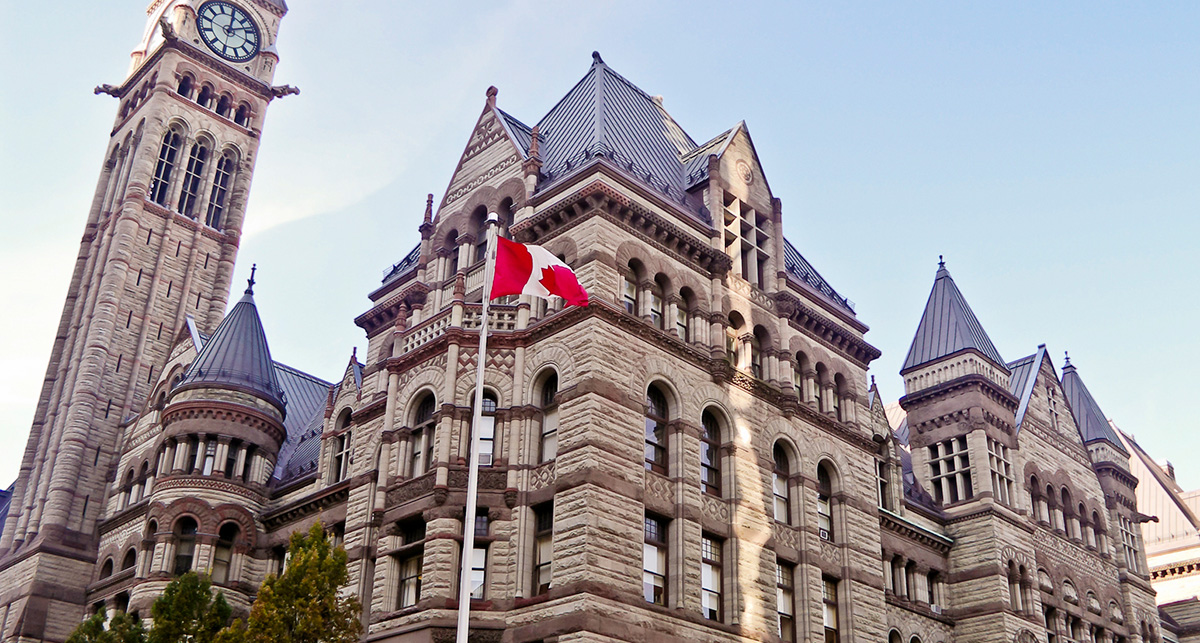
All criminal child pornography charges including:
- Possession of child pornography;
- Accessing Child pornography;
- Distribution of Child pornography and
- Making Child pornography
are extremely serious and carry mandatory minimum jail sentences irrespective of the age or the circumstances surrounding the case. (Note – minimum sentences do not apply to Young Offenders – under 18 years of age). It should also be noted that the minimum sentence regime with respect to a number of charges in the Criminal Code have been successfully attacked as being unconstitutional.
In addition, upon conviction every child pornography offender must officially register with the Sexual Offender Information Registry Act (SOIRA) and the Ontario Sex Offender Registry. The length of registration will vary based on a number of factors, but the minimum period if the Crown elects to proceed by way of summary conviction is 10 years and 20 years if the Crown proceeds by way of indictment.
Child pornography cases are typically prosecuted in a very aggressive fashion. Heavy sentences and penalties aside, there are all kinds of other negative consequences associated with a child pornography conviction. It can affect your standing in the community, employability, personal relationships, and international travel.
However, all is not lost. There are defences available.
These cases are often built on evidence extracted from the computer files of the accused. The lawfulness of the search and seizure must be examined in detail and challenged. An unlawful search will result in the charges being dismissed.
It also must be proven that the child pornography in question was obtained as result of the accused’s action, and not someone else with access to that computer.
Also, each image or video used as evidence must meet the definition of child pornography as stated in the criminal code. The onus is on the crown to demonstrate this.
Where the evidence is found within the device is also important.
The Crown must establish that the accused had knowledge and control over the illegal material.
Anyone that has been charged with a child pornography offence should seek legal counsel immediately, and exercise the right to remain silent.
The law firm of Daley, Byers has extensive experience defending individuals charged with possession of child pornography, accessing child pornography, distributing child pornography and making child pornography. Just like with any other charge, the accused is innocent until proven guilty. It is incumbent on the crown to prove all elements of the case beyond a reasonable doubt.
Daley, Byers will do everything necessary to uncover every possible defense and we hold the Crown to the high standard of proof needed in a criminal charge. If an acquittal seems unlikely due to overwhelming evidence, there are still negotiations to pursue. A summary conviction proceeding is much less serious than proceedings by indictment. The timing of the offence is sometimes important.
For example – if the timing of the offence can be negotiated to only include when the accused was under the age of 18 – or if the timing of the offence can be attributed to a period when lower minimum penalties were in place.
The location of files can also be a significant factor – eg. have they been deleted – but still exist on the computer.
In the course of a successful defence of child pornography charges we use our team of technical experts to investigate the procedures and conclusions made by the Police. No stone is left unturned in your defence.
The search warrants and the information provided by police to support the issuance of the search warrant are carefully scrutinized, – every possible defence is analyzed.
Issues of Concern
There are a multitude of questions and concerns that arise from a child pornography charge. Let’s start with the basics.

What is Child Pornography?
There is typically a fair amount of confusion surrounding what exactly falls within the scope of child pornography, based on the lawful definition. Proving beyond reasonable doubt the age component as contained in the definition of child pornography is often problematic for the Crown.
The definition of child pornography under the Criminal Code, Section 163.1:
163.1 (1) In this section, child pornography means
- (a)a photographic, film, video or other visual representation, whether or not it was made by electronic or mechanical means,
- (i)that shows a person who is or is depicted as being under the age of eighteen years and is engaged in or is depicted as engaged in explicit sexual activity, or
- (ii)the dominant characteristic of which is the depiction, for a sexual purpose, of a sexual organ or the anal region of a person under the age of eighteen years;
Can written material be construed as child pornography?
Child pornography is not limited to pictures and video, it can also come in the form of an audio recording or any written material that depicts any person under the age of 18 as a sexual object or promotes sexual activity. This can be found under Section 163.1 (b) and (c) of the Criminal Code:
- (b)any written material, visual representation or audio recording that advocates or counsels sexual activity with a person under the age of eighteen years that would be an offence under this Act;
- (c)any written material whose dominant characteristic is the description, for a sexual purpose, of sexual activity with a person under the age of eighteen years that would be an offence under this Act;
We have defended a number of clients who have written emails or text messages to minors who have faced charges of making child pornography as a result of the content of those documents.
In a rather bizarre case, we defended an individual charged with accessing child pornography who was observed by employer security video reading a short story on his computer at work that contained content that qualified by definition as child pornography. In this particular case, we were able to get the charge withdrawn.
What kind of laws are there regarding the creation of, the making of, and the publishing of child pornography?
It is a criminal offense in Canada to make, print, or publish child pornography. It is also a criminal offense to possess child pornography for the purpose of publication under Section 163.1(2) of the Criminal Code:
Making child pornography
(2) Every person who makes, prints, publishes or possesses for the purpose of publication any child pornography is guilty of an indictable offence and liable to imprisonment for a term of not more than 14 years and to a minimum punishment of imprisonment for a term of one year.
The manufacturing of child pornography includes any photos, videos, audio recordings, or written material taken on any device or any other medium.
The Crown is obligated to prove beyond a reasonable doubt that:
- The content was in fact made by the accused;
- The materials included child pornography (a person under the age of 18 depicted in a sexual manner);
- The act was carried out with intent;
- The accused was aware of or purposefully blind to the content;
Note: if a boyfriend takes a sexual picture of his girlfriend that meets the definition of child pornography and she is under 18, he is guilty of making and possessing child pornography.
In fact we have defended a client who took such a picture when he was a youth, kept the picture for a number of years and put it on the internet many years later. He was charged with making child pornography, possession of child pornography and distribution of intimate images.
What does it mean to transmit of distribute child pornography?
The distribution laws on child pornography prohibit the act of abetting or assisting anyone in obtaining or viewing it. This can be as simple as sharing a link or an image with someone, or as involved as actively selling and exporting child pornography.
Section 163.1(3) of the Criminal Code states:
Distribution, etc. of child pornography
(3) Every person who transmits, makes available, distributes, sells, advertises, imports, exports or possesses for the purpose of transmission, making available, distribution, sale, advertising or exportation any child pornography is guilty of an indictable offence and liable to imprisonment for a term of not more than 14 years and to a minimum punishment of imprisonment for a term of one year.
The Crown must prove:
- The material is defined as child pornography;
- It was made available for transmission or distribution by the accused;
- It was done with intent;
Who is guilty of accessing child pornography?
It is not imperative that a person be in possession of child pornography in order to be guilty of accessing it. Anyone that deliberately opens a file or a link with the purpose of viewing child pornography may be charged with accessing child pornography.
It is on the onus of the Crown to prove:
- The accused did access it;
- Child pornography was what was accessed;
- It was done with intent and not accidentally.
What is the punishment for an Accessing Child Pornography conviction?
The sentence handed down for accessing child pornography is largely up to the discretion of the Crown as well as the judge. Accessing Child pornography is an offense that can be tried either as a summary offense, or by indictment. Other factors may also be considered for access cases, depending on extenuating circumstances surrounding the offense.
The sentences are set out in the Criminal Code as follows.
Section 163.1(4.1) of the Criminal Code states:
Accessing child pornography
(4.1) Every person who accesses any child pornography is guilty of
- (a)an indictable offence and is liable to imprisonment for a term of not more than 10 years and to a minimum punishment of imprisonment for a term of one year; or
- (b)an offence punishable on summary conviction and is liable to imprisonment for a term of not more than two years less a day and to a minimum punishment of imprisonment for a term of six months.

What are the laws regarding the possession of child pornography?
In order to be charged with possession of child pornography, it must be proven that the illegal materials were under the accused’s control. The crown must also prove that the accused was aware of the content, and that the content was child pornography. It is not necessary for the Crown to prove that the accused actually viewed the materials – but that the accused knew of its existence and presence.
Penalties
Child pornography possession is another type of offense that can be prosecuted as either a summary or an indictable offense. The penalties associated with a summary offense are far less severe than those for an indictable one.
Section 163.1(4) of the Criminal Code states:
Possession of child pornography
(4) Every person who possesses any child pornography is guilty of
- (a)an indictable offence and is liable to imprisonment for a term of not more than 10 years and to a minimum punishment of imprisonment for a term of one year; or
- (b)an offence punishable on summary conviction and is liable to imprisonment for a term of not more than two years less a day and to a minimum punishment of imprisonment for a term of six months.
- The mandatory minimum penalty for possession of child pornography has been struck down by the Ontario Court of Appeal.
What about drawings, cartoons, or anime? Can those be considered child pornography?
Any drawings, cartoons, or anime that contain sexually explicit content involving someone under the age of 18 are considered child pornography. In the eyes of the law, these types of materials are no different than ‘real life’ photos or videos. The content and intent are the same, regardless of medium.
Are there any other offenses associated with child pornography, other than possession, making, publishing, distributing and accessing it?
There are other offenses related to child pornography that revolve around dealings or interactions with the actual children, or police pretending to be underage.
One example is providing access to sexually explicit material to a child. S. 171.1
What does it mean to provide access to sexually explicit material to a child?
It is a criminal offense under Section 171.1 to make any sexually explicit material available to a child (anyone under the age of 18). This includes the transmission, distribution, or availability of any material depicting sexual acts.
Section 171.1 of the Criminal Code states:
Making sexually explicit material available to child
- 1(1) Every person commits an offence who transmits, makes available, distributes or sells sexually explicit material to
- (a)a person who is, or who the accused believes is, under the age of 18 years, for the purpose of facilitating the commission of an offence with respect to that person under subsection 153(1), section 155, 163.1, 170, 171 or 279.011 or subsection 279.02(2), 279.03(2), 286.1(2), 286.2(2) or 286.3(2);
- (b)a person who is, or who the accused believes is, under the age of 16 years, for the purpose of facilitating the commission of an offence under section 151 or 152, subsection 160(3) or 173(2) or section 271, 272, 273 or 280 with respect to that person; or
- (c)a person who is, or who the accused believes is, under the age of 14 years, for the purpose of facilitating the commission of an offence under section 281 with respect to that person.
Sending graphic email describing sexual acts to an underage person is an offence.
Another type of crime that one may be charged with under child pornography related laws is Luring a Child.
What does Luring a Child mean? (Child Luring)
Child luring occurs when an adult attempts to lure a child for the purpose of sexual activity.
Section 172.1 of the Criminal Code states:
Luring a child
- 1(1) Every person commits an offence who, by means of a computer system within the meaning of subsection 342.1(2), communicates with
- (a)a person who is, or who the accused believes is, under the age of eighteen years, for the purpose of facilitating the commission of an offence under subsection 153(1), section 155 or 163.1, subsection 212(1) or (4) or section 271, 272 or 273 with respect to that person;
- (b)a person who is, or who the accused believes is, under the age of sixteen years, for the purpose of facilitating the commission of an offence under section 280 with respect to that person; or
- (c)a person who is, or who the accused believes is, under the age of fourteen years, for the purpose of facilitating the commission of an offence under section 151 or 152, subsection 160(3) or 173(2) or section 281 with respect to that person.
Anyone can be charged with luring a child when using telecommunication to communicate with a child for the purpose of facilitating the commission of sexual exploitation, incest, sexual touching, sexual assault, child pornography, or abduction.
Penalties for Luring a Child
The sentencing for a child luring offense will vary based on the specifics of the offense, the character of the accused, and many other relevant factors. These factors may be aggravating, or mitigating. Child luring is another offense that can be tried as either a summary or indictable offense.
Penalties are set out in the Criminal Code as follows:
Punishment
(2) Every person who commits an offence under subsection (1) is guilty of
(a) is guilty of an indictable offence and is liable to imprisonment for a term of not more than 10 years and to a minimum punishment of imprisonment for a term of one year; or
(b) is guilty of an offence punishable on summary conviction and is liable to imprisonment for a term of not more than 18 months and to a minimum punishment of imprisonment for a term of 6 months.
The mandatory minimum sentence for child luring with respect to proceedings by indictment has been declared unconstitutional in a decision rendered in the Ontario Superior Court. There is no decision as of the time of writing with respect to the constitutionality of the minimum sentence on summary procedure.

How do child luring charges and possession, making of child pornography relate to each other?
There are many cases where in the course of communication over the internet a child is asked to send pictures which meet the definition of child pornography. In addition to the child luring charge, there are also charges of possession and accessing child pornography.
What is Invitation to Sexual touching? s. 521 Criminal Code
Any person who invites, counsels or incites a person under the age of 116 to touch for sexual purposes, directly or indirectly with a part of the body or with an object the body of any person …is of the offence invitation to sexual touching. This is another example of an offence that is often accompanied by child pornography charges. In some cases for example, there is an exchange of pictures or the viewing of film that meets the child pornography definition.
What is Sexual Interference? S. 151 Criminal Code
Sexual interference is when a person for sexual purposes touches, directly or indirectly a part of the body or with an object any part of the body of a person under the age of 16 years of age.
A similar offence for under the age of 14.
For a person between the ages of 14-16 it is a defence if the complainant consented to the sexual touching and the accused is less than 5 years older than the complainant and not in a position of trust or authority towards the complainant.
For a complainant between the age of 12 and 14 it is a defence if the complainant consented to the sexual touching and the accused is less than 2 years older than the complainant and not in a position of trust or authority.
This is another example where cell phone pictures can be taken that clearly satisfy the definition of child pornography. Making, possession and possible distribution of child pornography charges can sometimes accompany the charge of sexual interference.
What is Distribution of Intimate images? S. 162.1 (1) Criminal Code
Distribution of intimate images is the non consensual publication of intimate images of a person. This often occurs after a relationship break-up. However, depending on the age of the complainant at the time the pictures/film were taken the charges of publication, making and possession of child pornography can possibly accompany the charge of distribution of intimate images.
What does Warrant of Seizure mean? S. 164
A warrant of seizure maybe issued by a judge in a child pornography case, if there are reasonable grounds to believe that written material, or recording, copies of which are kept in the premises is child pornography.
What is a Search Warrant s. 487
A general search warrant can be issued by a justice who is satisfied by information on oath that there are reasonable grounds to believe that there is in a building, receptacle or place
- Anything in respect of which any offence against this Act or any other Act of Parliament has been or is suspected to have been committed;
- Anything that will afford evidence with respect to the commission of an offence;
A general search warrant issued pursuant to this section are often used in child pornography cases. The sworn information provided to the Justice must be examined carefully for its accuracy to ascertain if the Justice was provided with sufficient information to issue the warrant.Thereafter, the warrant itself must be reviewed for possible errors on its face. Finally, the police must only search in accordance with exact terms of the search warrant.
Permission to search a residence does not include permission to search a motor vehicle.
Break down of Penalties for a Child Pornography Conviction
As previously mentioned, sentences will vary based on circumstance, the character and integrity of the accused, and other outside influences.
Strictly an indictable offense, no option for a summary conviction.
- Minimum penalty – 1 year
- Maximum penalty – 14 years
These minimum penalties have been struck down in the Ontario Superior Court.
Distribution of Child Pornography
Also an indictable offense only, no chance for a summary prosecution.
- Minimum penalty – 1 year
- Maximum penalty – 14 years
The minimum penalties have been struck down in the Ontario Superior Court.
Possession of Child Pornography
A possession offense can be tried as either a summary or an indictable offense.
- Indictable – minimum penalty – 1 year
maximum penalty – 10 years
- Summary – minimum penalty – 6 months
maximum penalty – 2 years less a day
The minimum penalties for possession of child pornography have been struck down by the Ontario Court of Appeal.
Accessing Child Pornography
An accessing child pornography charge can also be prosecuted as an indictable or summary offense.
- Indictable – minimum penalty – 1 year
maximum penalty – 10 years
- Summary – minimum penalty – 6 months
Maximum penalty – 2 years less a day
A conviction for any of the above offenses will also result in mandatory registration with the Sex Offender Information Registration Act (SOIRA) unless the offender is a youth at the time of the offence.
Does the nature or quality of the content make a difference when it comes to sentencing?
Yes, the nature and quantity of the content is relevant when it comes to sentencing. The size of the collection, and the description of the content will serve as mitigating or aggravating factors.
For instance, a substantial collection of child pornography, is considered an aggravating factor. The length of the period of time the child pornography was collected is a factor to considered.
If the content is violent in nature, and depicts abuse to a child, that is also an aggravating factor.
A collection of videos is often considered more serious than a collection of photos. Comic depiction of child pornography is not considered as aggravating as there is no real child involved.
Other factors that a court will consider include the age of the accused, the health of the accused, and the level of the accused’s actual sexual activity with persons under the age of 18 (if any) , and the level of risk the accused may present to society moving forward. In this regard, a sex psychiatrist’s consult and opinion is necessary.
Does it matter if the content was purchased?
It is also applicable to take into account whether or not the material was purchased. If it was in fact purchased, that is an aggravating factor because it indicates it was done for profit.

What is the best way to defend against a child pornography allegation?
First things first, exercise your right to remain silent and contact a dependable and experienced child pornography lawyer immediately. An experienced lawyer will examine in detail every aspect of your case, look for every possible weakness in the Crown’s position and plan your defence.
Daley, Byers is an excellent choice due to their long-running experience and expertise in dealing with such cases. We will explore every possible defense to ensure all evidence was obtained legally and that no corners were cut.
Having an experienced lawyer can make a difference.
Why Clients Choose Us?
- High Success Rate
- Experienced: 32+ Years Each Partner
- Fair Payment Plans
- 24/7 Access to Our Team
- Free Consultation
- We Care About Your Case
